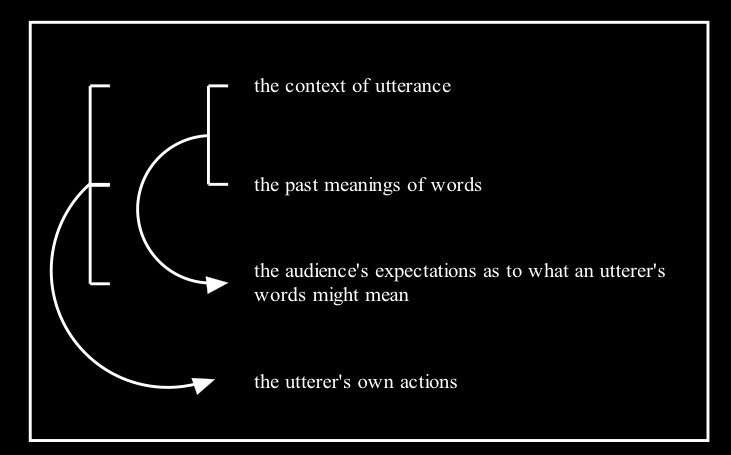Press the right key for the next slide (or swipe left)
also ...
Press the left key to go backwards (or swipe right)
Press n to toggle whether notes are shown (no equivalent if you don't have a keyboard)
Press m or double tap to see a menu of slides
Appendix: Grice/Tomasello (optional)
communication by language without mapping or training
social interaction
‘children acquire linguistic symbols as a kind of by-product of social interaction with adults’
Tomasello 2003, p. 90
Infants ‘begin to comprehend and use … linguistic symbols on the basis of their skills of social cognition and cultural learning’
Tomasello, Striano & Rochat 1999, p. 582
‘language is itself one type-albeit a very special type-of joint attentional skill’
‘the kind of rational activity which the use of language involves is a form of rational cooperation’
Grice 1989, p. 341
language creation
‘it is an error to suppose we have seen deeply into the heart of linguistic communication when we have noticed how society bends linguistic habits to a public norm.’
Davidson 1984 [1982]: 278
‘convention does not help explain what is basic to linguistic communication, though it may describe a usual, though contingent feature.’
Davidson 1984 [1982]: 280
‘An utterance has certain truth conditions only if the speaker intends it to be interpreted as having those truth conditions.’
Davidson 1990: 310
social interaction
language creation
Grice on meaning
'A speaker S non-naturally means something by an utterance x if and only if, for some hearer (or audience) H, S utters x intending:
(1) H to produce a particular response r, and
(2) H to recognise that S intends (1).
Grice 1957
